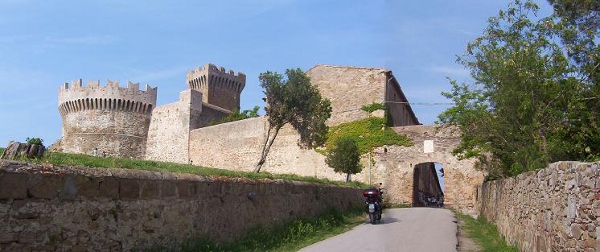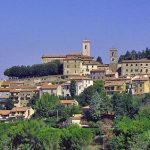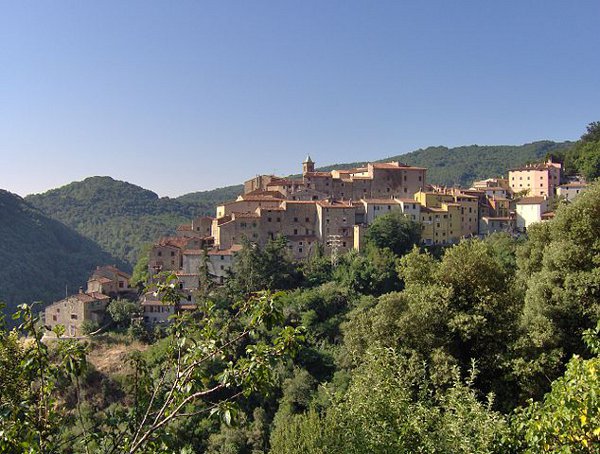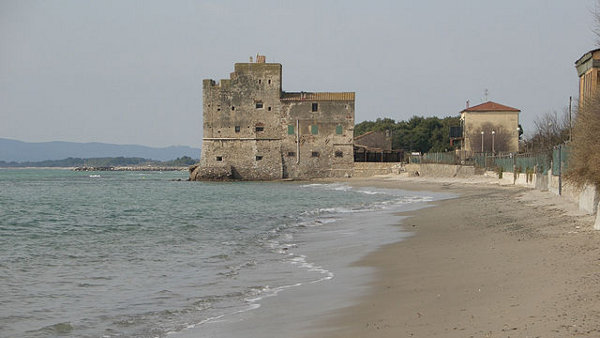Piombino, located on the promontory of the same name, the capital of an ancient Italian state, a seaside town, home of the Etruscan metallurgy, heir to ancient traditions of classical and medieval, Piombino retains many architectural works in that past.
Receives a clear appearance by the Florentine Renaissance A. Look under the dynasty of Appiani lordship from 1399 and the Principality in 1589; domain of the Boncompagni-Ludovisi, was granted in 1805 by Napoleon’s sister Elisa leaving tangible signs of his government almost to the nickname “Little Paris”.
The ancient port of Falesia, of which we know from the fifth century AD today is the most important port-Tuscan passenger, as well as connected with the island of Elba and the Archipelago, even with Sardinia and Corsica.
A city to discover: art, sea, history, folklore and tasty cuisine, enrich this territory, which today sees tourism as a projection into the future, a bet on the future.
With its 31.5 Km “of coastline beaches, of which 22 Km sandy and rocky 9.5 reachable by both land and sea, with its mild climate, its crystal clear sea by the stunning backdrops, Piombino offers recreation and relaxation for all ages: from sports holidays, adventure and fun in nature and cultural tours that can be enjoyed throughout the year, each season has its wonders to discover – in spring and autumn, periods in which nature is more generous than scents and colors, the guest can discover aspects that often remain hidden from the summer tourists.
Beaches, tennis courts, skating, soccer, sailing, surfing, swimming, diving, horseback riding, boating at night, links to Elba, Corsica and Sardinia;
The sea, calm or turbulent centuries viewer of this land, now has its rightful place as leader. Intact, still in its primitive beauty, laps the shores of the promontory of Piombino, both north and south.
Including the archipelago and clearly visible from the coast on a clear day, as well as the island of Elba, the islets of Cerboli, which is 4 miles from Piombino, to Palmaiola completely uninhabited and not far behind him, which emerges as a cliff of triangular shape.
The archipelago enjoys a mild climate, ranging from 7 ° to 30 ° C, with winters characterized by erratic rainfall and frequent droughts in summer the winds are predominantly from N and NW SE SW, while the ocean currents coming from the southern coast of the peninsula.
The promontory of Piombino, has a shape generally rocky, which are not easily accessible has preserved the look, despite some unauthorized actions in fishing operations and the neglect of tourism.
In the marine environment in the area of Baratti and San Vincenzo, after the first stretch of sandy bottom, you will encounter rocky formations that form a structure at greater depth coralligenous. Interesting phenomenon manifests itself in this area, thanks to the contribution of the pit nutritional Hot that comes from the hinterland and that converges in this point seasonally favoring the influx of fish of particular value, such as sea bream, sea bass, sea bream and paraghi etc.., Determining ideal conditions for reproduction.
On the south side of the coast of Piombino the seabed is sandy, muddy and debris. At about 40 mt. depth are funds coralline algae. The fish are typical southern habitat that makes this typical environment from a ecological point of view.
As you can see, the seabed had to achieve to human behavior clumsy and superficial, while managing to preserve its integrity and, as, returning to the man also some traces of its ancient civilization. They are in fact numerous archaeological remains found in the waters of the Gulf of Baratti, some are still being studied, others are kept in the collection of Populonia Gasparri, others have gone missing. Also of importance is the finding of a Roman ship, in 1957, about 120 m. from the shore, at the church of San Cerbone. Emerged from the sandy bottom at about 4m. depth, along with some items likely belonging to the ship’s cargo.
In the central part of the gulf, however, at about 20 meters. deep, was discovered a Roman shipwreck in good condition, unfortunately ravaged by looters. It was possible to retrieve a jar of iron stored in the Palazzo Civico di Piombino, not in good condition.
In the south east of the promontory of Piombino, in the Gulf of Salivoli to the west, two amphorae have been found intact at about 20 m, along with other pottery fragments. In the stretch of sea off the Long Beach have been unearthed pottery fragments of indeterminable age, up to over 30 m. of depth.
A large creek of Cala al Piccione, always in the area of Long Beach, was localized by some fishermen Piombino an Etruscan shipwreck, while, at the tip of Tonnarelle in 1832 was discovered the famous bronze statue of ‘”Apollo Piombino “, now kept at the Louvre museum in Paris.
Described the sea in its natural environment and its treasures, now we follow an overview of the beaches of Piombino, those north and south of the city and pathways needed to get there.
Piombino has its beaches, all different among themselves: sand, stones, rocks, landscapes with various frames, some in direct contact with the modern architecture of the city, such as the beach of Salivoli, some in contrast with traces of ancient buildings, such as Piazza Bovio, some at the foot of the slopes of vegetation, such as the one in Via Amendola, Porto Louse, Calamoresca and Long Beach. These are the main goals of the citizens of Piombino, young people, older people, mothers and children who enjoy days of sun and fun.
The coast to the south and north of Piombino is reached along the road out of the city, following the directions of the signs that lead, on the one hand and on the other to Rome to San Vincenzo. Opting for the detour to Rome, the road leads south to the coast. It can be accessed by following the paths of engagement along the main road from this branch out one after the other, marked by signs with the names of the resorts to which they lead and that is Perelli, Carlappiano, Mortelliccio, Carboniferous and Torre Mozza.
Through all areas of the countryside and come to the sea bore by short stretches of pine forest. The tourist facilities in this area consist of camping sites, residences, shopping malls, bars and restaurants directly on the beach, horse riding and beach sports, surfing and boat hire
And ‘the ideal place to live away from the city, in an area where nature blends with discrete tourist sites.
Following the road signs instead of Piombino exit for San Vincenzo, walk along a street lined with mild hills. After a few kilometers you will reach the turnoff for the left-Populonia Baratti. We are located in the ancient Etruscan homeland. The dense Mediterranean vegetation close to the wooded hills is rich in vegetation. Enchanted to admire the beauty of the landscape of this area, from the promontory on which stands Populonia dives look in incomparable bay of Baratti, a favorite destination of tourists in search of sea and traces of history. Very striking is the beach of Buca delle Fate, on the rocky cliff, accessible from the road that leads from Baratti to Populonia. The organization of the tourist area includes restaurants, bars, riding, boat rental, taxi service for the sea and a chance to visit the coast, following the ways of the Etruscans surfing, surf school and other activities. Not least are the archaeological sites of Baratti leading to an increasing flow of visitors each year, along with the archaeological museum and the highest part of Populonia where visitors flock in small souvenir shops.
Back on the main road, past the junction for-Populonia Baratti, we continue observing the direction for St. Vincent. After a few minutes we are flanked by pine forest of Rimigliano that follows the path for about 4/5Km.La Rimigliano beach is located behind the pine forest and follows the perimeter of the coast immediately after the beach Torraccia. Bathers lovers of afternoon siestas
https://tuscanysea.com/backoffice/immagini/tuscanysea.com/29-17-5-2013-11-38-01.jpg
https://tuscanysea.com/backoffice/immagini/tuscanysea.com/29-17-5-2013-11-38-02.jpg

















